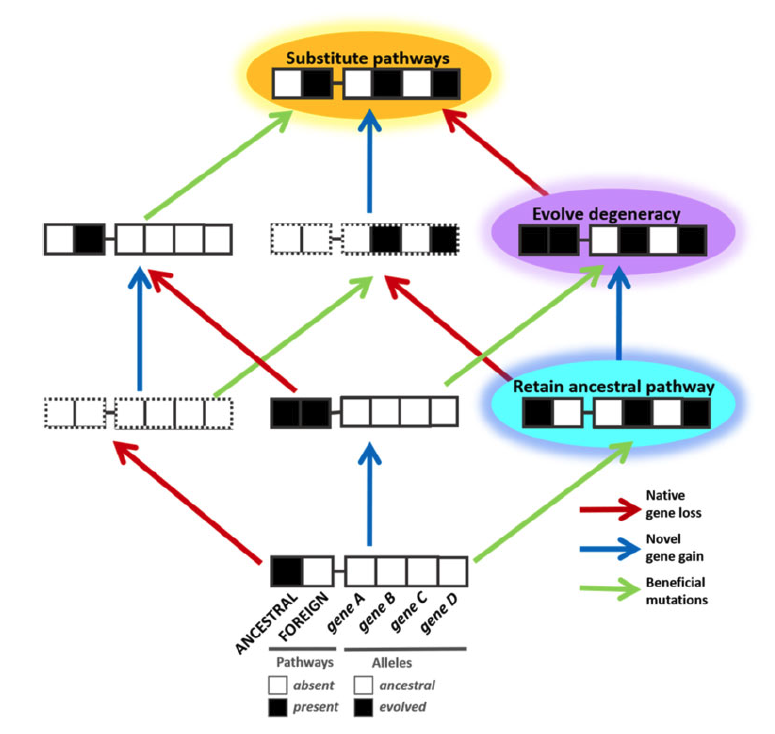Congrats to Eric Bruger and his coauthors for his new paper in Genome Biology and Evolution that built upon our old work on epistatic interactions between beneficial mutations (Chou et al., 2011. Science) to show that beneficial mutations can also be key in how new pathways work together.

Most prior work has looked at beneficial mutations, but not necessarily combined with gene loss and gene gain events. In terms of understanding how organisms can evolve to have multiple, degenerate (analogous functions with unrelated parts) pathways, it is critical to consider all types of genetic events that can occur. Eric found that the utilization of a foreign pathway for formaldehyde oxidation was deleterious in the presence of the native pathway, unless there were also some beneficial mutations present that help put the foreign pathway to good use. This indicates that even if degeneracy is initially disfavored, and the dual pathway scenario is initially disfavor able (red and orange arrows below) there may be one or few steps needed for it to be stabilized and have multiple pathways be beneficial (the dark blue arrow below).

